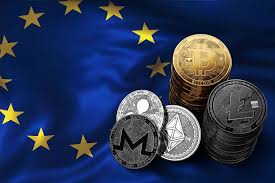The heads of the Group of Seven affluent democracies have decided to arrange a $50 billion loan that will use interest from revenues derived from Russia’s central bank assets that have been frozen as collateral to aid Ukraine in its struggle for survival.
The funds might arrive in Kyiv before the end of the year, but specifics of the agreement were still being worked out as G7 leaders convened for a summit in Italy
A French official who verified the deal on Wednesday before it was formally announced at the meeting said as much.
The majority of the funding would come from a loan from the United States government, secured by potential earnings from the sale of some $300 billion in frozen Russian assets.
Laptops 1000The nations that make up the European Union are home to the great majority of the money.
The loan would be primarily guaranteed by the United States, but it might be “topped up” with funds from Europe or other national contributions, according to a French official.
Officials from several nations have been debating whether it was lawful to seize the money and send it to Ukraine for more than a year.
When Moscow invaded Ukraine in 2022, the United States and its allies promptly froze whatever assets the Russian central bank had access to, essentially any money kept in banks outside of Russia.
Even if the assets are immobilized and out of Moscow’s reach, they are still Russian property.
Although governments can easily freeze assets or money, converting them into forfeited property that can be utilized for Ukraine’s advantage necessitates an additional level of legal process, requiring a basis in law and a court decision.
Instead, the windfall gains from the frozen assets have been placed aside by the European Union. That money bucket is more easily accessible.
Separately, the United States earlier this year passed the Rebuilding Economic Prosperity and Opportunity for Ukrainians Act (REPO Act), which gives the Biden administration the authority to confiscate $5 billion in Russian state assets that are situated in the country and utilize them for Kyiv’s benefit. Negotiations are ongoing on that arrangement.
Technical specialists will handle sorting out the specifics.
The objective, however, is “to provide the necessary resources to Ukraine now for its economic energy and other needs so that it’s capable of having the resilience necessary to withstand Russia’s continuing aggression,” according to U.S. National Security Advisor Jake Sullivan on Wednesday.
Laptops 1000Getting the funds to Ukraine quickly is another objective.
The French official stated that the details could be worked out “very quickly and in any case, the $50 billion will be disbursed before the end of 2024.”
The official was not authorized to be publicly named by French presidential policy.
Several demands go beyond the costs of the war.
According to the World Bank’s most recent damage assessment of Ukraine, which was published in February, the country will need to spend $486 billion over the next ten years on restoration and recovery.
The decision to release Russia’s assets comes after the US Congress took a very lengthy time to approve military assistance for Ukraine.
Former US Ambassador to Ukraine John Herbst stated, “The fact that American funding is not quite reliable is a very important additional reason to go that route,” at an Atlantic Council event previewing the G7 conference.
“The question of burden-sharing arises” if Russia regained control over its frozen assets, or if the immobilized money failed to generate enough interest to cover the loan repayment.
The official stated that it is yet unclear who would bear the responsibility.
The Centre for Strategic and International Studies’ Max Bergmann, director of the programme on Europe, Russia, and Eurasia, stated last week that European finance ministers were concerned that their nations “will be left holding the bag if Ukraine defaults.”

















